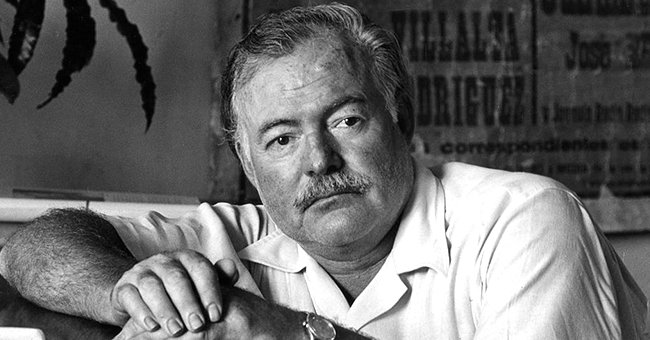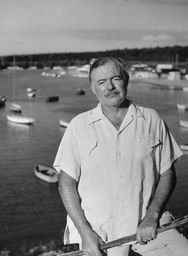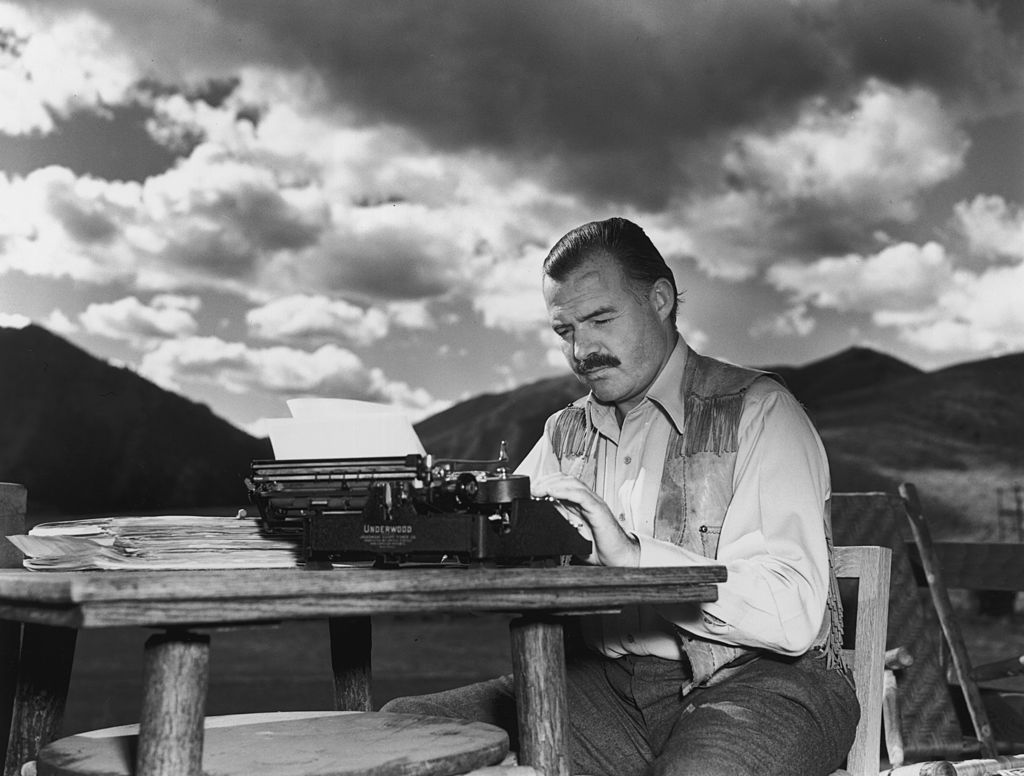
Glimpse inside Ernest Hemingway's Complicated Life and Tragic Death
While he was alive, Ernest Hemingway was called the best writer in America. Glimpse into his complicated life and tragic death below.
Most know Ernest Hemingway for his literature and remember him as a Noble Prizer. However, he lived a very complicated and adventurous life that saw him create amazing works of literature.
Hemingway was born in 1899 in Oak Park, Illinois, to a family of eight. His father was a doctor named Clarence, and his mother, Grace, was a music teacher. He was the second eldest out of his six siblings.

Ernest Hemingway pictured in front of harbor dotted with small boats. | Photo: Getty Images
From 1917 to 1918, Hemingway got his first writing job as a reporter for The Kansas City Star. When he turned 18, he enlisted in Red Cross Ambulance Service and was sent to Italy.
During 1918, he was seriously injured by an enemy mortar shell. He had many pieces of shrapnel tear through his body. By his own count, there were over 200 bits of shrapnel in his body. After surgery and an aluminum knee, he recovered.
Following his time serving in Italy, he moved back to Oak Park. He made money selling ad copy in Chicago. He soon met his first wife, Elizabeth Hadley Richardson. The couple married in 1921 in a Methodist church.
The couple settled in Paris, France and Hemingway started work at The Toronto Star as a correspondent. The couple had one child, John, together. In 1923, Hemingway released a few books; however, they did not sell well.
Hemingway and Hadley went on a few adventures together, including a trip to Spain to follow bullfighting. The trip would later inspire his book, "The Sun Also Rises," published in 1926.
The book does well and received good reviews from major publications. Edmund Wilson, a critic, called his novel the best novel written by a person from Hemingway's generation. A month later, Hadley and Hemingway are divorced.
He goes on to marry a woman named Pauline Pfeiffer. The couple settled in Key West, Florida. They had their son Patrick. Before his birth, Hemingway published a book of short stories called "Men Without Women."
The couple had two sons together. They were married for 13 years. They went on a few trips together, including a trip to Kenya, which provided him with material for his novel "Green Hills of Africa" and short stories.
In 1937, Hemingway traveled to Spain to be a correspondent to cover the civil war. He was the highest-paid foreign correspondent at the time. He began a romantic relationship with Martha Gellhorn, who would eventually be his third wife.
His experience in Spain inspired his novel, "For Whom the Bell Tolls," published in 1940 and declared his finest work. It tells a story of the Spanish civil war through the eyes of an American volunteer named Robert Jordan.
The same year he married Gelhorn. However, their marriage did not last long as they divorced in 1945. During their marriage, Hemingway reported on the Allied invasion of France in London. He witnesses many horrifying acts of the war.
He married his fourth wife, Mary Welsh, in 1946. The couple settled and lived in Cuba. His book, "The Old Man and The Sea," won a Pulitzer prize in 1953, and he won the 1954 Noble Prize but was unable to accept the award in person because of his health.

Ernest Hemingway pictured at his typewriter working outside, 1939. | Photo: Getty Images
The famed writer lived through two plane crashes when he was visiting Uganda. Unfortunately, he suffered from both mental illness and physical ailments because of the many traumas he had experienced.
According to IMBD, he had bipolar disorder and insomnia. He also struggled with chronic alcoholism, liver failure, and diabetes. The famed writer took his own life at 61 in 1961.
A few years later, Welsh and his son Patrick edited a collection of his work and published it posthumously. The book is called "Moveable Feast," and they used his unfinished manuscripts and notes to create it.
PBS released a new documentary on his life. Jeff Daniels and the docuseries creators Ken Burns and Lynn Novick discussed the project with Steve Inskeep for NPR.
